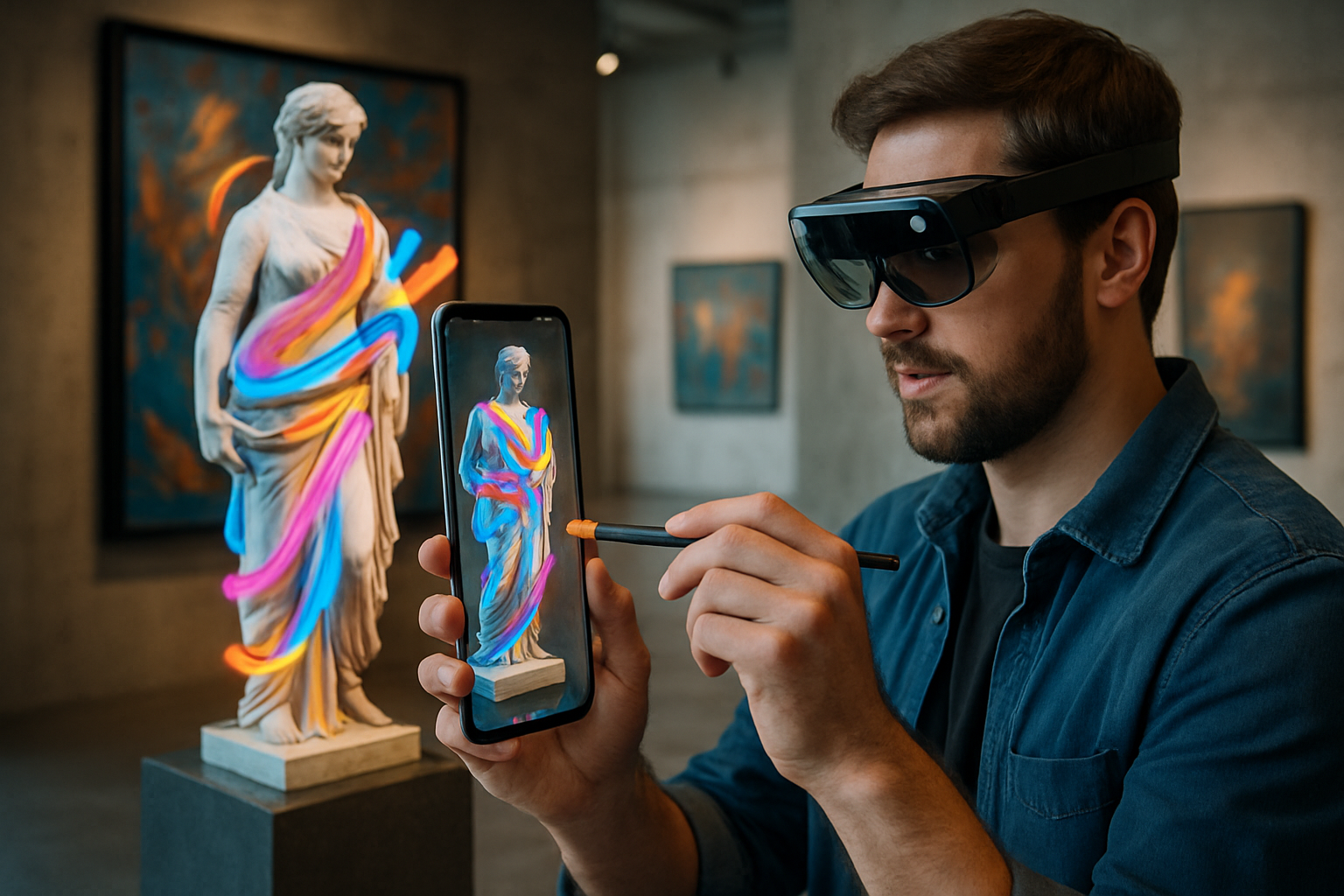Augmented Reality: Painting the World with Digital Brushstrokes
In an era where technology seamlessly blends with our daily lives, augmented reality (AR) has emerged as a groundbreaking medium for artistic expression. This innovative fusion of the digital and physical realms is reshaping how we create, experience, and interact with art. From interactive museum exhibits to location-based installations, AR is pushing the boundaries of creativity and challenging our perceptions of what art can be. As this technology continues to evolve, it's opening up new possibilities for artists and audiences alike, transforming the very fabric of our cultural landscape.

Breaking the Fourth Wall: AR in Museums and Galleries
Traditional art spaces are undergoing a revolution with the integration of AR technology. Museums and galleries worldwide are embracing this new medium to enhance visitor experiences and breathe new life into static exhibitions. AR allows curators to add layers of information, animation, and interactivity to existing artworks, providing context and depth that was previously impossible. Visitors can now use their smartphones or AR glasses to see paintings come to life, sculptures transform, or historical artifacts reconstructed in their original glory. This fusion of the old and new is not only attracting younger, tech-savvy audiences but also offering fresh perspectives on classic works.
Public Spaces Reimagined
AR art is not confined to the walls of institutions; it’s spilling out onto the streets, transforming public spaces into dynamic, ever-changing galleries. Artists are using geolocation technology to create site-specific installations that can only be viewed through AR devices. These works range from whimsical additions to urban landscapes to powerful social commentaries that overlay digital content onto real-world issues. Public AR art has the unique ability to surprise and engage passersby, turning everyday environments into canvases for creativity and sparking conversations about the role of technology in our shared spaces.
The Artist’s New Toolkit
For creators, AR presents an exciting and challenging new medium. Traditional artistic skills are being complemented by digital proficiency, as artists learn to work with 3D modeling software, animation tools, and AR development platforms. This convergence of disciplines is giving rise to a new breed of artist – one who is as comfortable with code as they are with color theory. The AR toolkit allows for unprecedented levels of interactivity and personalization in art. Viewers can now manipulate, customize, and even contribute to artworks in real-time, shifting the role of the audience from passive observer to active participant.
Challenges and Ethical Considerations
As with any emerging technology, AR art faces its share of challenges and ethical questions. Issues of digital rights management, privacy concerns, and the potential for visual pollution in public spaces are all being grappled with by artists, curators, and lawmakers alike. There’s also the question of accessibility – while AR art has the potential to democratize art experiences, it also requires access to specific technologies that may not be available to all. Balancing the creative possibilities with responsible implementation is crucial for the sustainable growth of this new art form.
The Future Canvas: What Lies Ahead for AR Art
The future of AR art is as boundless as the imagination of its creators. As technology continues to advance, we can expect even more immersive and interactive experiences. The development of AR contact lenses and more sophisticated wearable devices will further blur the line between the digital and physical worlds. Collaborative AR artworks that span continents, real-time AR performances, and entire AR-enhanced environments are just a glimpse of what’s to come. As this medium matures, it has the potential to redefine not just how we create and consume art, but how we perceive and interact with the world around us.
In conclusion, augmented reality is more than just a technological novelty in the art world – it’s a paradigm shift that’s reshaping the very nature of artistic expression. By merging the digital with the physical, AR art offers new ways to engage, inspire, and challenge audiences. As we stand on the brink of this new frontier, one thing is clear: the canvas of the future is no longer flat, but a multidimensional space where imagination knows no bounds. The art world is watching with bated breath as this digital renaissance unfolds, promising to paint our world in colors and experiences we’ve yet to imagine.





